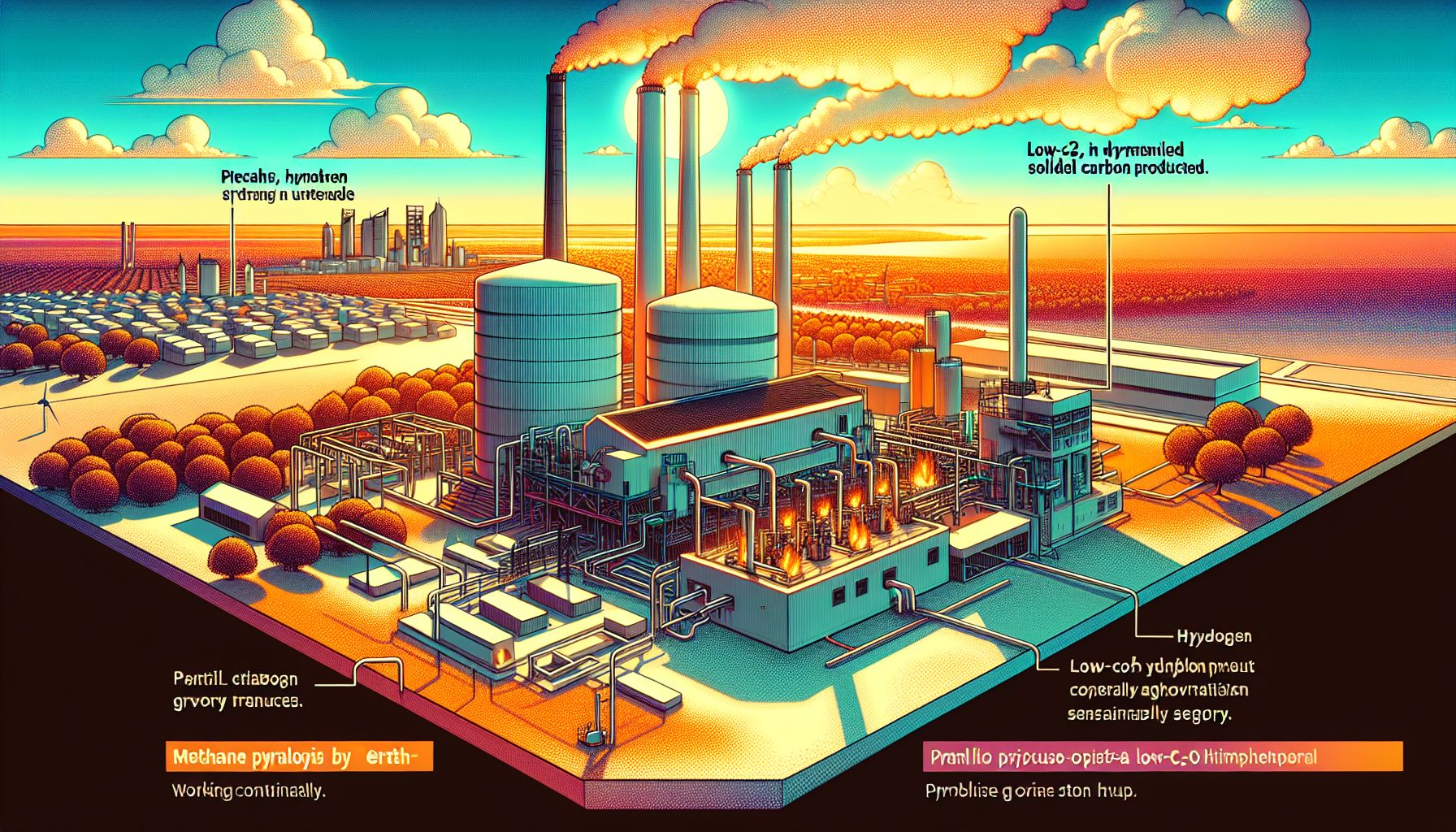Methane Pyrolysis: A Breakthrough in Clean Hydrogen Production

Melbourne, Monday, 16 September 2024.
Australian startup Hazer Group successfully demonstrates methane pyrolysis for low-CO2 hydrogen production. The technique, which generates solid carbon as a byproduct, marks a significant step towards sustainable energy solutions. Operating continuously for 240 hours, the pilot plant in Perth showcases the potential of this innovative approach to revolutionize the hydrogen industry.
A New Era in Hydrogen Production
The successful demonstration by Hazer Group of its methane pyrolysis technology marks a new era in hydrogen production. Unlike traditional methods such as steam methane reforming, which result in significant CO2 emissions, methane pyrolysis offers a cleaner alternative by breaking down methane into hydrogen and solid carbon. This not only minimizes greenhouse gas emissions but also creates a valuable byproduct in the form of solid carbon, which can be used in industries ranging from tire manufacturing to lithium-ion batteries.
Continuous Operation and Government Support
The pilot plant in Perth, Australia, operated continuously for 240 hours, producing hydrogen and graphite from biomethane sourced from wastewater treatment facilities. This 10-day continuous operation was a crucial milestone, qualifying Hazer Group for additional government subsidies and enhancing the commercial viability of their technology. The facility, which began operations in January 2024, has an annual production capacity of 100 tons of hydrogen and 380 tons of graphite, demonstrating the scalability of methane pyrolysis.
Global Collaborations and Future Prospects
Hazer Group’s success has attracted international collaborations, including partnerships with French energy company Engie and entities in South Korea, Japan, and Canada. These collaborations aim to scale up the methane pyrolysis process globally, further contributing to the reduction of CO2 emissions in hydrogen production. The solid carbon byproduct, although having a smaller market than hydrogen, provides an additional revenue stream, making the business case for methane pyrolysis even stronger.
Comparative Advantages and Market Challenges
Methane pyrolysis is seen as a promising alternative to steam methane reforming, which, while producing higher hydrogen yields, also emits CO2 and requires complete capture and storage for sustainability. According to research from the Max Planck Institute for Chemical Energy Conversion in Germany, methane pyrolysis prevents the release of greenhouse gases, making it a key player in the transition to a zero-emission hydrogen economy. However, the current costs of methane pyrolysis (2600-3200 € per ton) are higher than those of steam methane reforming (2000 € per ton), presenting a market challenge.
The Path Forward
Despite the cost challenges, methane pyrolysis remains a viable temporary alternative for CO2-free hydrogen production, aiding the transition from fossil fuels to renewable energies. The stable operation of Hazer Group’s pilot plant and the ongoing international collaborations indicate a strong future for this technology. As the global demand for clean hydrogen continues to grow, innovations like methane pyrolysis will play a crucial role in achieving a sustainable and carbon-neutral future.

